This post is also available in: Español
Shecas are a unique and popular Guatemalan pan dulce or sweet bread. This recipe for Guatemalan shecas is easy to follow and once you try this you won’t stop making shecas at home. Shecas, also known as Xecas, Semitas, and Cemitas is a very popular Guatemalan bread from Quetzaltenango. These delightful bread rolls, with a bun like ball on top have a unique flavor derived from a combination of panela (unrefined cane sugar), honey, and anise. They’re perfect as sweet treat or as a Guatemalan dessert.
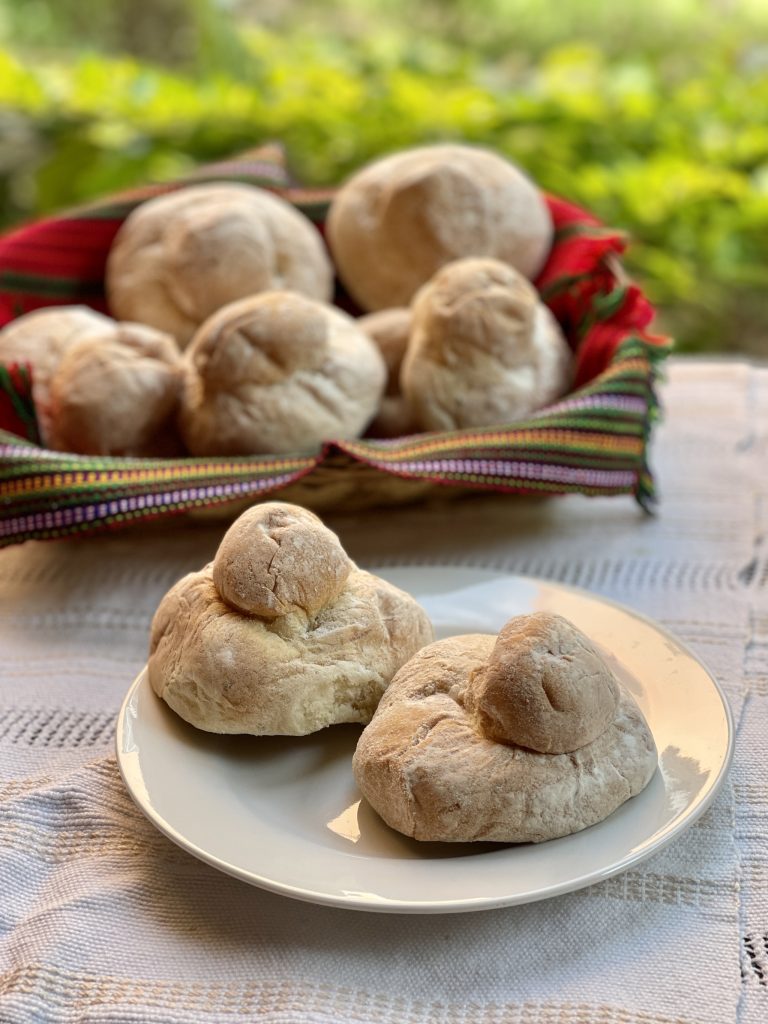
Shecas are not only a staple food item but also a cherished gift. Quetzaltecos often send shecas as special treats to their loved ones. Furthermore, these delectable bread rolls have become an emblem of Quetzaltenango’s identity, symbolizing its rich culinary heritage and captivating visitors with their irresistible aroma and taste.
What are shecas de Guatemala?
Shecas are a type of Guatemalan pan dulce that is very popular across the country.. They are soft and pillowy on the inside, with a distinctive light anise flavor. Traditionally they are made with pilloncillo or panela , giving them a slightly brown color. In different parts of Guatemala this bread is knows as shecas, xecas, anise semitas or cemitas. And here things might get confusing as Mexican semitas are a very popular bread and in some areas of Guatemala semitas are different from shecas.

One thing that makes shecas distinctive in appearance is their signature little top knot, which is formed by twisting a small portion of dough into a small ball at the top of the bun. This knot adds a charming touch to the bread and makes it easy to identify. They are traditionally also dusted in flour just before baking which adds to their unique appearance.
History of shecas
The history of bread of bread in Latin America is closely tied to the influence of Europeans during the colonial period as they brought wheat and bread making techniques with them. Shecas have a rich history in Guatemala and are an essential part of its culinary heritage. In Guatemala, people can’t seem to agree on where shecas originated from. Some argue that San Marcos is its birthplace, while others claim that it comes from Quetzaltenango. This does make sense as historically part of the San Marcos department used to be part of Quetzaltenango during colonial times.
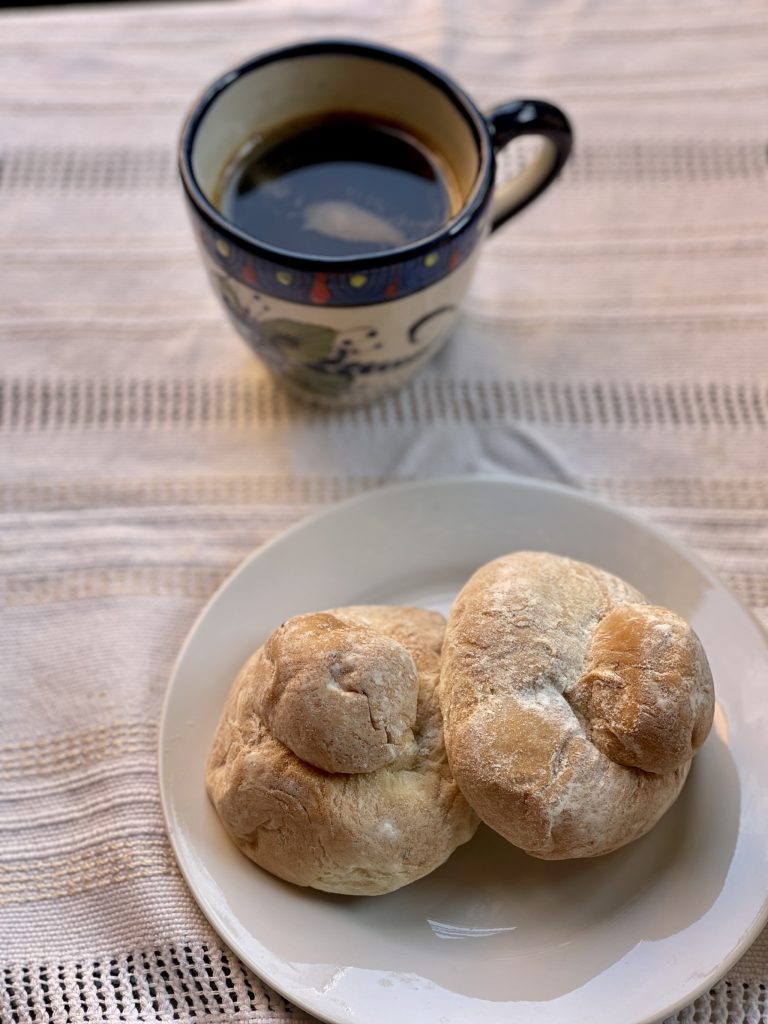
Prehispanic origins of shecas
Originally consumed by the indigenous population, this bread gained popularity among the Spanish settlers over time. The term “sheca” is derived from the K’iche’ language, where “she” means leftover or residue, and “ka'” refers to the grinding stone. It is believed that the indigenous people used the leftover flour, known as “hojuela,” to make shecas, while the first-class flour was reserved for the white bread favored by the Spaniards.
Another account of the history of this bread recounts that before the Spanish colonization, the Mam ethnic group made an early version of shecas. It was part of their culture and gastronomy. However prehispanic bread mainly used corn flour and wheat flour was introduced when the Spanish arrived. It is believed that the indigenous people used the leftover flour, known as “hojuela,” to make shecas, while the first-class flour was reserved for the white bread favored by the Spaniards. The transition from brown to white shecas occurred when the bread began to appeal to the Spanish taste buds.
Some sources highlight how the influx of German immigrants to Guatemala that began in the 1820’s boosted the production of the bread. This made shecas more readily available to more people in more areas of Guatemala. And so it seems that my own family history may be strongly tied to shecas, or at least to breadmaking in Guatemala. The first Bendfeldt ancestor who arrived in Guatemala from Hamburg, in the 1800’s was Hermann Bendfeldt, a bread and pastry maker. He established a pastry shop and cafe in Guatemala city called La Bola de Oro. I wonder if he made shecas there, wouldn’t that be pretty amazing?
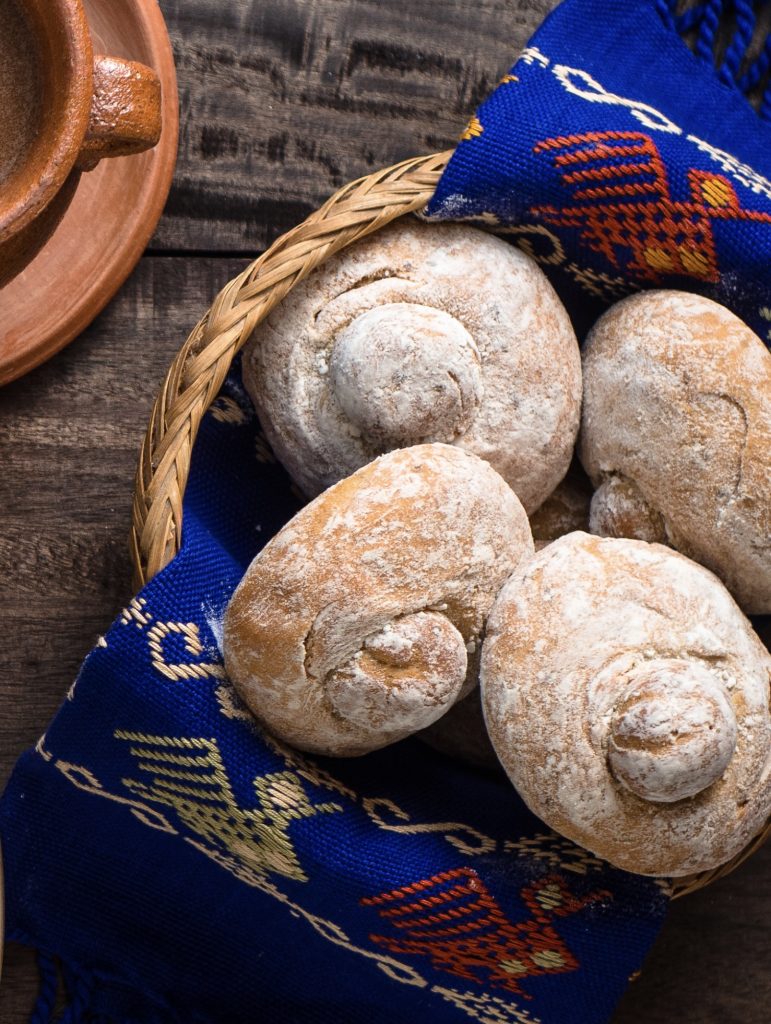
Geographic origin of shecas: San Marcos or Quetzaltenango?
There is ongoing discussion in Guatemala regarding the geography origin of shecas. Some say they originated in San Pedro Sacatepequez, San Marcos were the indigenous people were already making a similar type of bread called sheca . As a result, this type of bread is now specifically known as shecas san pedranas. The original inhabitants of this municipality are also called shecanos since they are credited with creating shecas.
In Quetzaltenango, the production of shecas is believed to have been adopted from San Marcos. However, those who made them added unique ingredients and added the top knot. They became so popular that they acquired the name shecas quetzaltecas and are also sometimes referred to as xecas from Xela. Regardless of where shecas came from, they are now one of the most popular breads throughout Guatemala.
Today, shecas can be found in various parts of Guatemala, but Quetzaltenango remains the heartland of this beloved bread. Shecas can now be found with their traditional top knot or in the shape of a torpedo roll and can be made with or without anise. They are always dusted in flour.
Xecas the Pride of Quetzaltenango
Xeca or sheca bread rolls are more than just a delicious Guatemalan bread; they hold a special place in the hearts and traditions of the Quetzaltecos. Whether paired with cheese, beans, jelly or accompanied by a steaming cup of chocolate calient shecas bring a burst of joy to every bite. But their significance goes beyond mere food. Quetzaltecos will often bring shecas as special gifts to family and friends living in different parts of the country. And Guatemalan immigrants visiting their home country often bring shecas back to the US, just like I always bring some champurrads when I travel to Guatemala. These bread rolls are a symbol of Quetzaltenango’s identity, representing its vibrant culinary heritage and the love shared among its people.

Sheca de Guatemala Variations
Bakeries like Xelapan in Quetzaltenango specialize in shecas. In Xelapan you can find over 20 varieties of shecas. Some of them filled with fruit jamss and some others stuffed with savory fillings like refried beans. Many sheca recipes today also substitute the piloncillo or panela for either brown or white sugar, so you will find both white and slightly brown shecas.
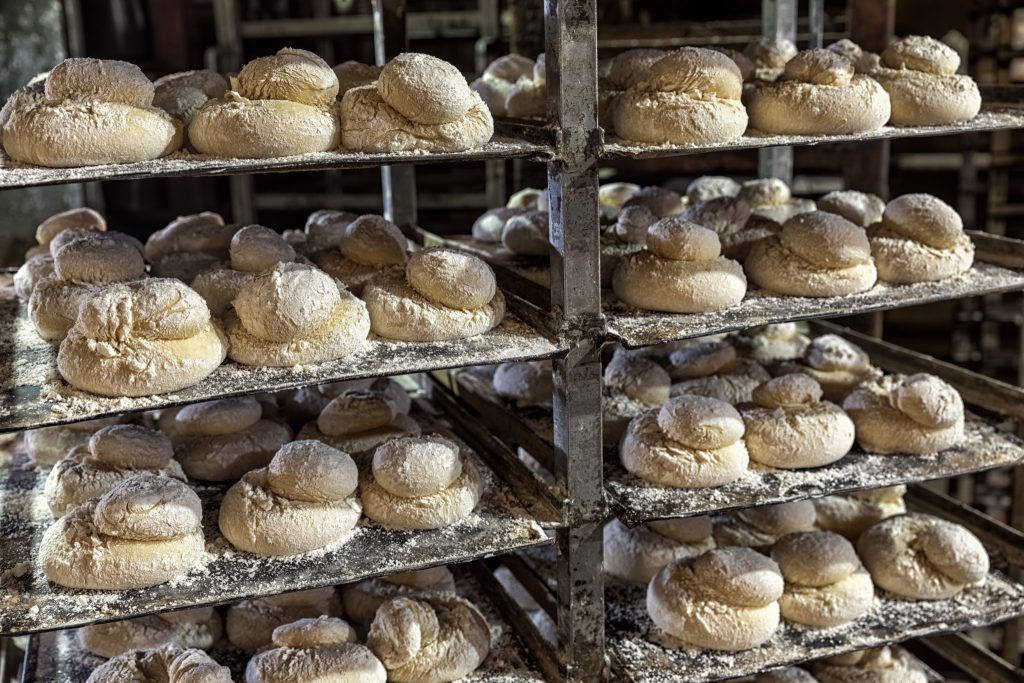
If you are traveling to Guatemala City and want to try shecas be sure to visit Panaderia San Martin or Isopan. You can also find Isopan bakeries in Antigua Guatemala. Both of these bakeries can be found all over the city and both of them make delicious shecas.
Sheca Bread Pairings
Shecas are usually consumed for breakfast or as an afternoon snack or refacción (merienda).Because of their light sweetness they are usually served with hot chocolate, which makes for a delicious and satisfying breakfast or snack. If filled with a savory filling like cheese or beans they make for a complete meal. I love to have them paired with a Guatemalan tamal, specially with a sweet tamal like the Guatemalan tamal negro.

Recipe for Shecas de Guatemala (Xecas or Semitas)
This recipe is for the traditonal shecas from Quetzaltenango, with their light caramel color, top knot and dusted in flour. Their slightly sweet and aromatic flavor, which comes from the addition of anise seeds is what makes this pan dulce so unique.
Ingredients for making Guatemalan shecas:
Prep time: 1 hour 30 minutes
Servings: 10
- 3 1/2 cups all-purpose flour
- 1/2 cup piloncillo or panela, grated
- 6 tablespoons butter
- 2 tablespoons anise seeds
- 1 teaspoon salt
- 1 tablespoon baking powder
- 1 cup warm water
- 1 tablespoon yeast

How to make shecas from Guatemala
- Start by preparing the yeast mixture. In a small bowl, combine the yeast, 2 tablespoons of grated piloncillo or panela, and 1 tablespoon of flour.
- Add 1/2 cup of warm water, mix well, cover, and let it sit for 20 minutes to activate the yeast.
- Meanwhile, gather all the dry ingredients on a working surface.
- Mix all the dry ingredients together, including the yeast mixture, to form a dough. Gradually add the remaining 1/2 cup of warm water while kneading the dough for about 10 minutes. Shape the dough into a ball, place it in a bowl, and let it rest for 30 minutes.
- After resting, shape the dough into a log and cut it into 10 equal pieces.
- Roll each piece into a ball.
- Create the knot at the top by rolling each ball into a cylinder. At one end of the cylinder create a very thin “neck” with a small ball of dough at the end. Place the other end of the cylinder on the table and gently push the small top ball of dough into the rest of the dough. You can also create the knot by pulling up on the dough ball at the top and then twisting it to form a small ball at the top.
- Finally, roll each bread roll into flour to coat on all sides.
- Bake in a preheated oven at 325°F (160°C) for 25 to 30 minutes, or until golden brown. The bread rolls should be soft and delicious.
Tips for Making the Best Guatemalan Sheca Bread
- Piloncillo or panela can be substituted with an equal amount of brown sugar or regular sugar if you don’t have it available. This will still give the bread rolls a delicious sweetness.
- Make sure the water used to activate the yeast is warm, but not too hot, as hot water can kill the yeast and prevent proper rising.
- When shaping the dough into a ball, ensure it is smooth and free of cracks. This will help create a uniform texture in the bread rolls.
- Resting the dough allows it to relax and rise, resulting in softer and lighter bread rolls. Cover the bowl with a clean kitchen towel or plastic wrap to keep the dough from drying out.
- For an extra touch of flavor, you can lightly toast the anise seeds before adding them to the dough. This will enhance their aroma and taste.
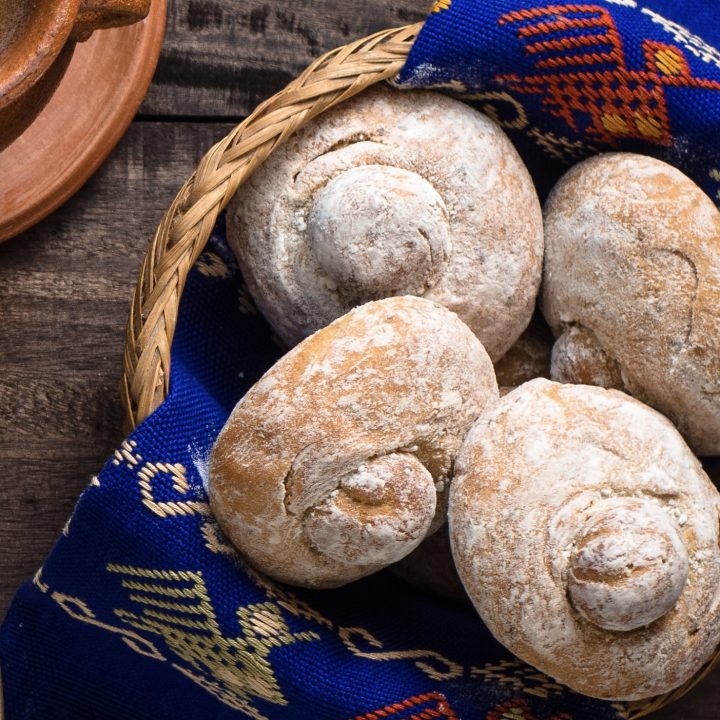
Recipe for Shecas de Guatemala
Ingredients
- 3 1/2 cups all-purpose flour
- 1/2 cup piloncillo or panela, grated
- 6 tablespoons butter
- 2 tablespoons anise seeds
- 1 teaspoon salt
- 1 tablespoon baking powder
- 1 cup warm water
- 1 tablespoon yeast
Instructions
- Start by preparing the yeast mixture. In a small bowl, combine the yeast, 2 tablespoons of grated piloncillo or panela, and 1 tablespoon of flour.
- Add 1/2 cup of warm water, mix well, cover, and let it sit for 20 minutes to activate the yeast.
- Meanwhile, gather all the dry ingredients on a working surface.
- Mix all the dry ingredients together, including the yeast mixture, to form a dough. Gradually add the remaining 1/2 cup of warm water while kneading the dough for about 10 minutes. Shape the dough into a ball, place it in a bowl, and let it rest for 30 minutes.
- After resting, shape the dough into a log and cut it into 10 equal pieces.
- Roll each piece into a ball. Create the knot at the top by rolling each ball into a cylinder. At one end of the cylinder create a very thin “neck” with a small ball of dough at the end. Place the other end of the cylinder on the table and gently push the small top ball of dough into the rest of the dough. You can also create the knot by pulling up on the dough ball at the top and then twisting it to form a small ball at the top.
- Finally, roll each bread roll into flour to coat on all sides.
- Bake in a preheated oven at 325°F (160°C) for 25 to 30 minutes, or until golden brown. The bread rolls should be soft and delicious.
Nutrition Information:
Yield: 10 Serving Size: 1Amount Per Serving: Calories: 264Total Fat: 8gSaturated Fat: 4gTrans Fat: 0gUnsaturated Fat: 2gCholesterol: 18mgSodium: 418mgCarbohydrates: 44gFiber: 2gSugar: 9gProtein: 5g
Other Guatemalan recipes you’re sure to love
Empanadas De Manjar De Leche (Filled With Custard): Empanadas de manjar are hand pie-like pastries filled with a milk-based creamy filling. If you want to surprise your loved ones with this delicious Guatemalan dessert, here is a quick recipe for you to prepare.
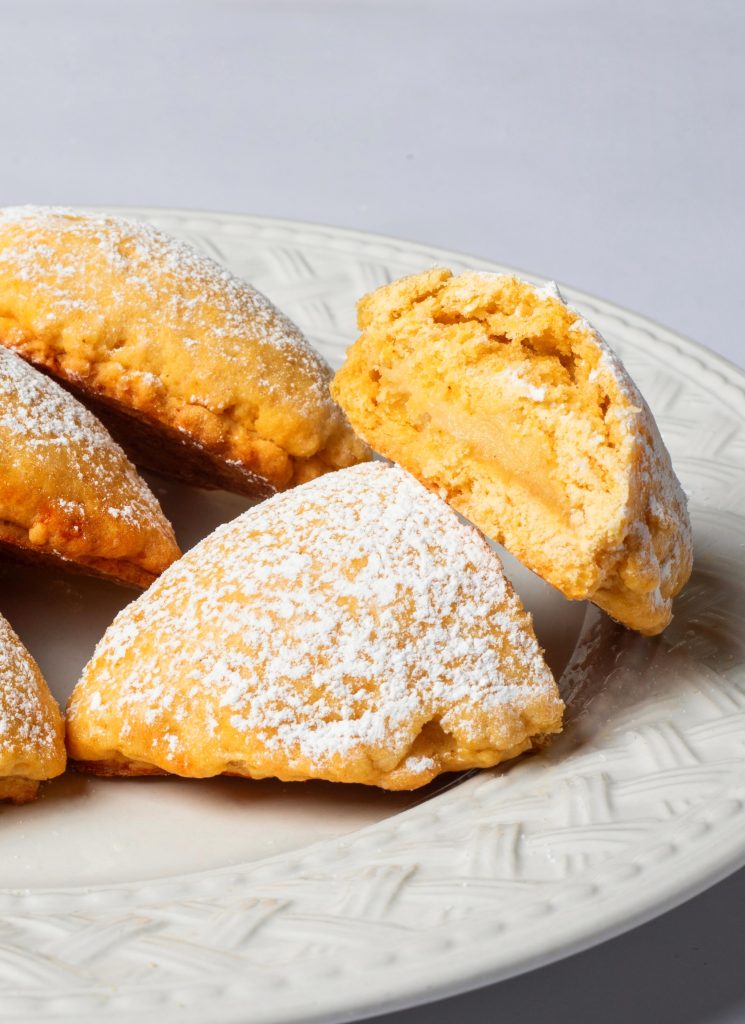
Guatemalan Cocadas Recipe: Coconut Cookies: With just a few simple ingredients these cocadas recipe is perfect for making it with your kids or for a crowd. Guatemalan cocadas are one of the easiest and most delicious Guatemalan dessert recipes. These coconut cookies, very similar to coconut macaroons, are so simple and quick and they taste amazing. This coconut cookie recipe is also a great Guatemalan recipe to make for school as it’s always a huge hit with kids and adults alike.
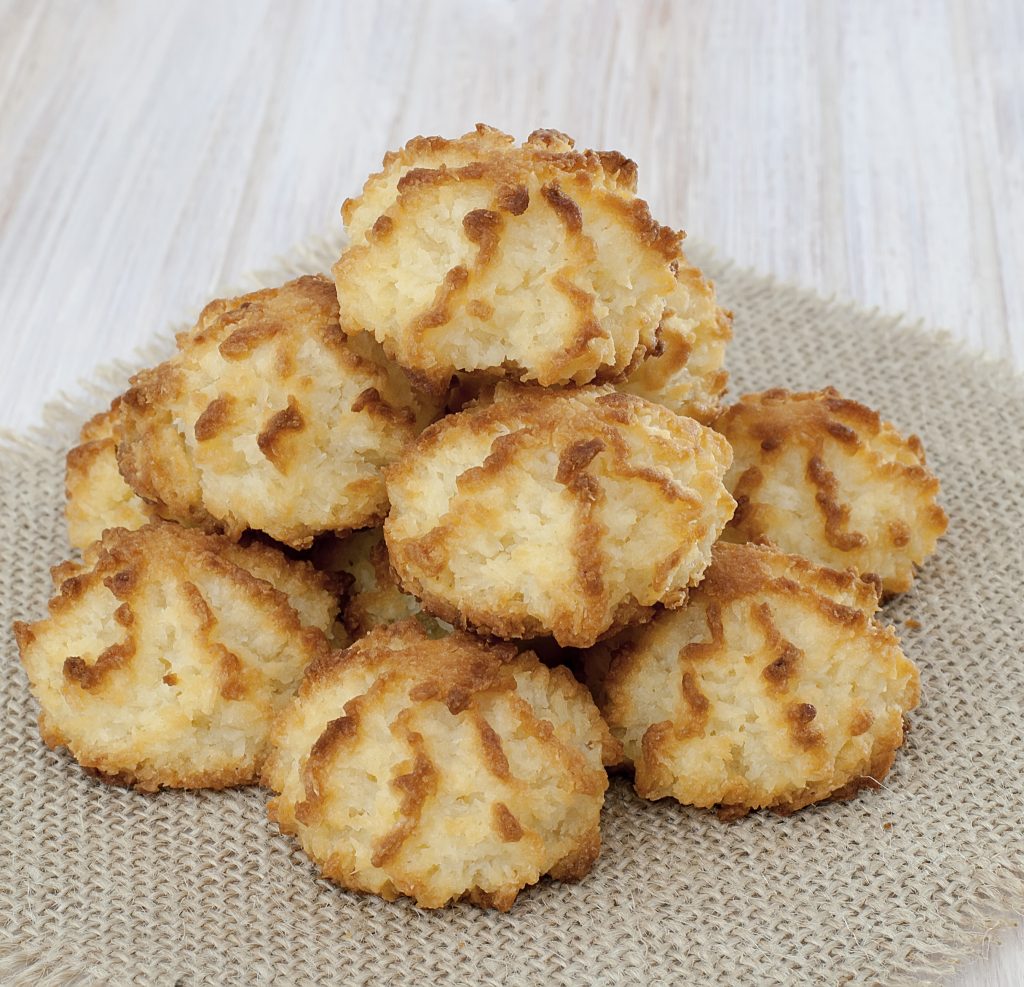
Champurradas: A super easy recipe for champurradas that will surely be a success with everyone in the family! Guatemalan champurradas are scrumptious giant cookies with the perfect level of crunch to dunk in your morning coffee! This traditional Guatemalan dessert is so simple to make and perfect if you’re looking for an easy Guatemalan dish.
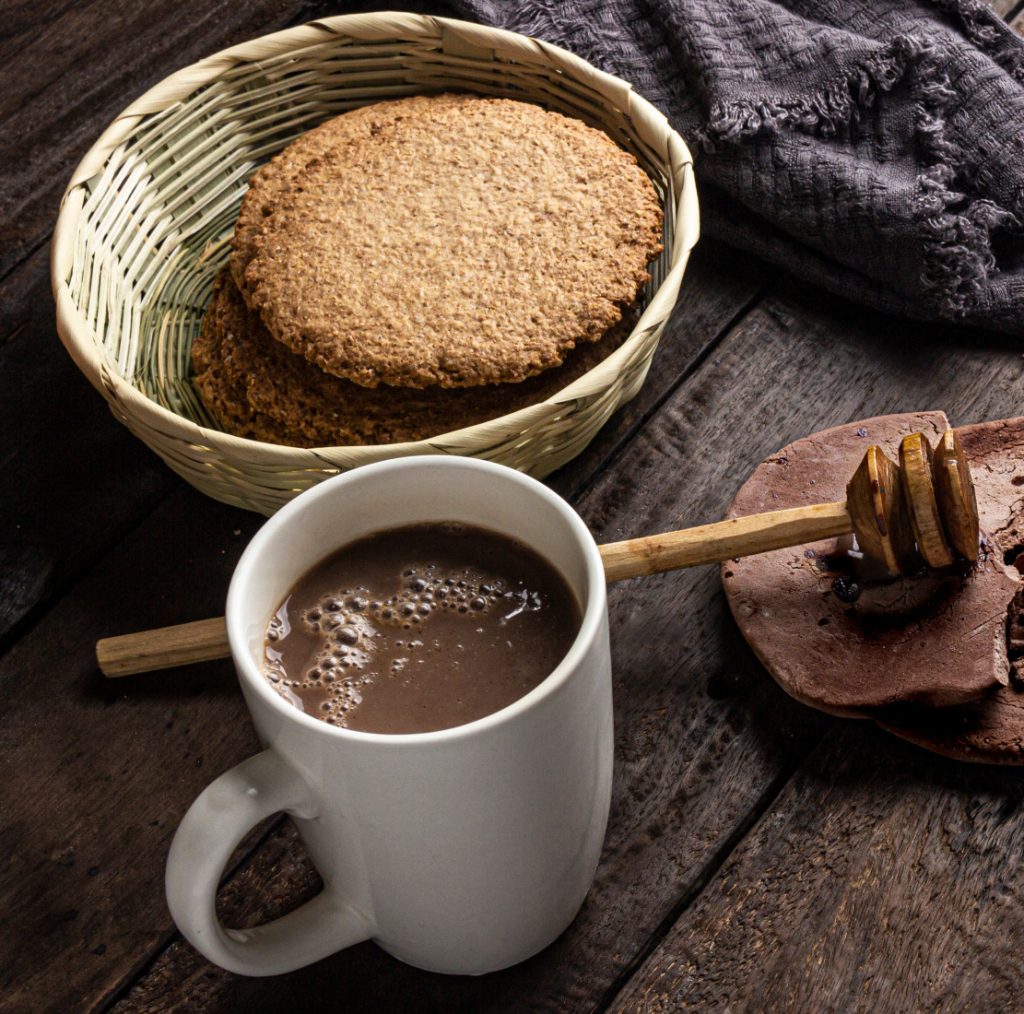
Bocado De Reina: Bocado de Reina is a delicious Guatemalan cake made with leftover bread. It is remarkably similar to bread pudding but has more of a cake consistency. It is an amazingly easy and quick dessert that goes great with any meal!
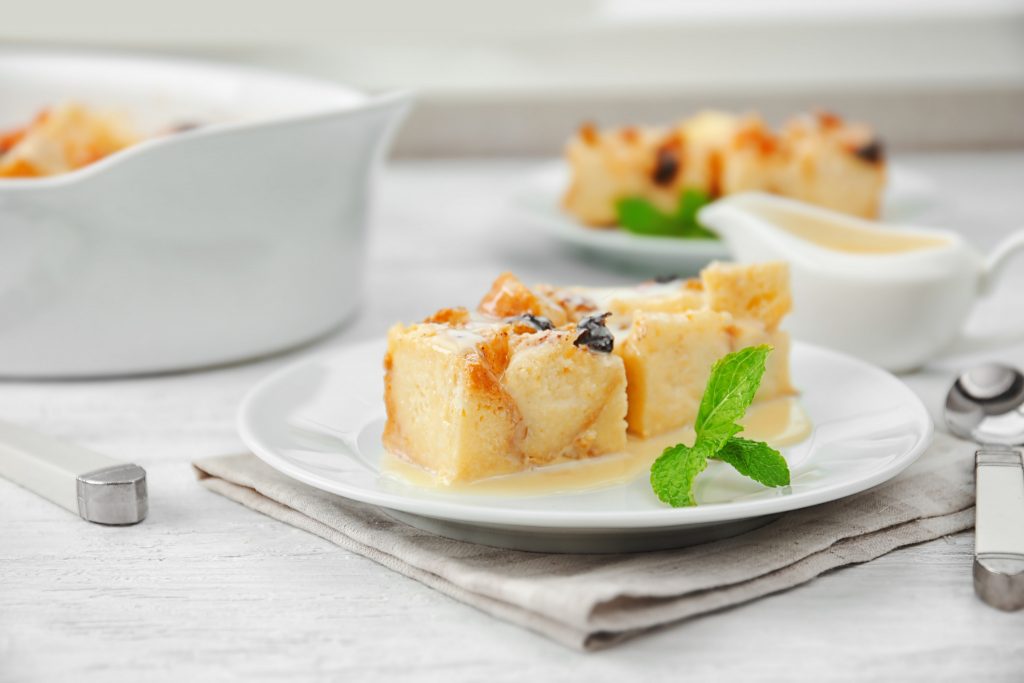
- Best Things to do in Granada, Nicaragua with Teens - April 28, 2024
- Guatemalan Dulce de Chilacayote Recipe (Crystalized Chilacayote Candy) - February 26, 2024
- Guatemalan Naranjas en Miel Recipe (Candied Oranges Recipe) - February 25, 2024
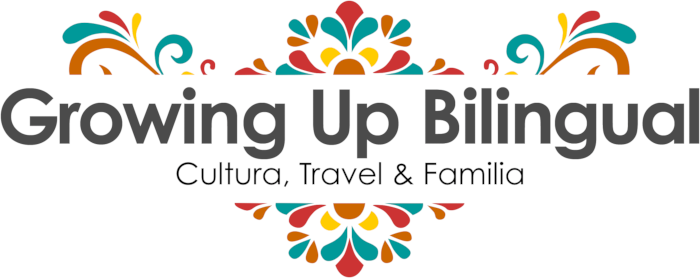


Thanks for your article!
I’ve been looking for info about Xecas for years but could never find anything. And the Guatemalan bakeries in Chicago where I’ve asked were not familiar. Years ago I lived the mountains (“Alaska” se llama) between Xela and Lago Atitlan, and went to the market at Nueva Santa Catarina Ixtahuacan where I would buy xecas and I loved them! They were mildly sweet, did not have a topknot (I think they were either torpedo or a small x-shape sometimes) and I don’t think were made with white flour, not sure. Maybe they were xecas san pedranas. Me encantaba, pero nunco los he encontrado en los estados.
Gracias por la informacion! Ya me da ganas buscar otra vez.
So glad this recipe brought back memories! Let me know how they come out if you make them!